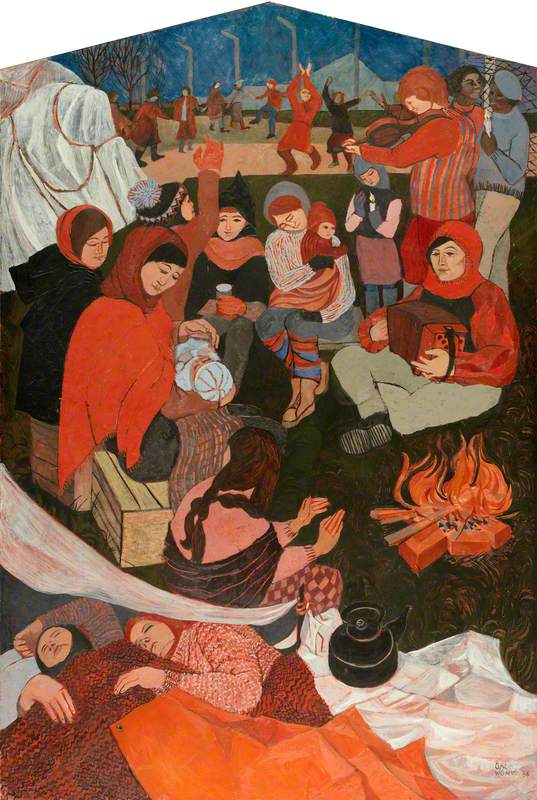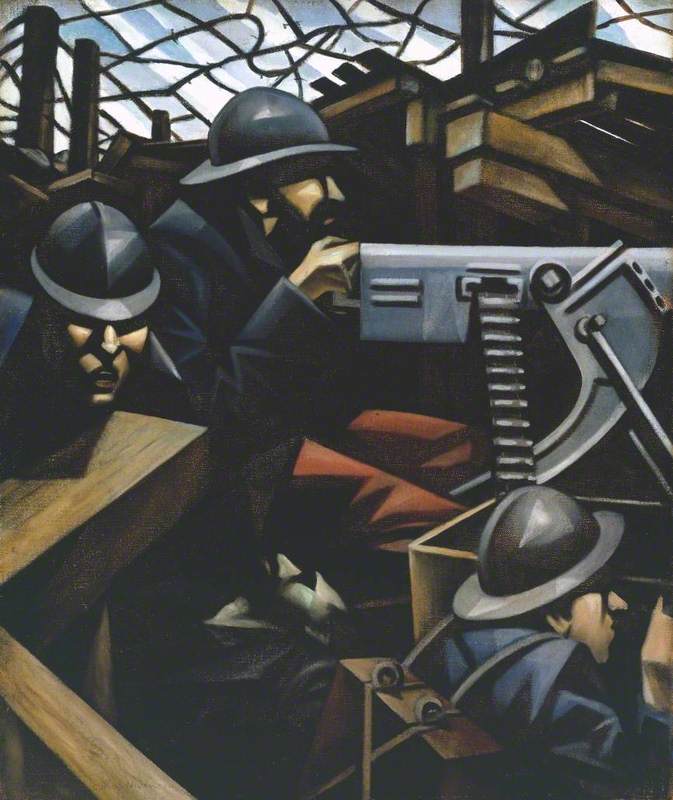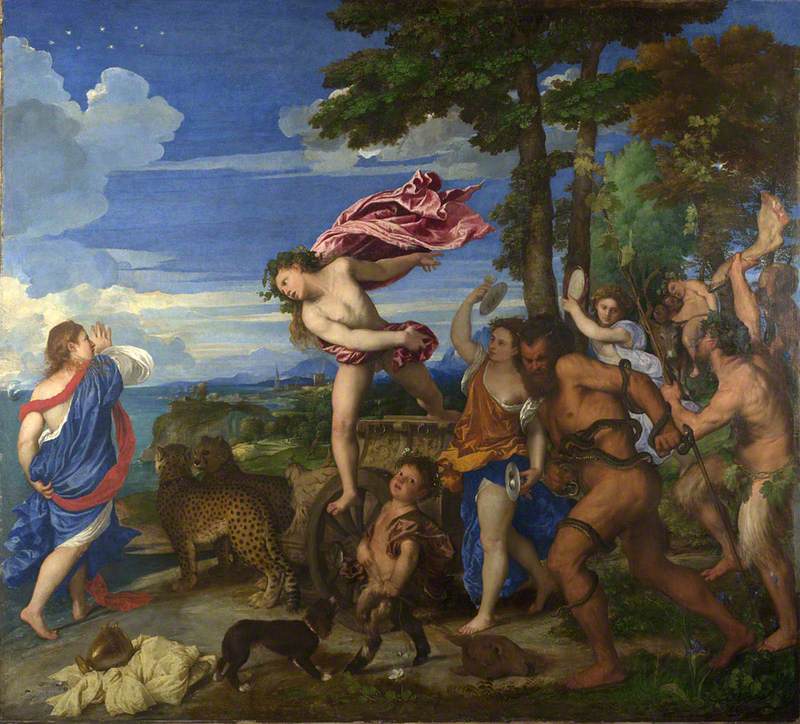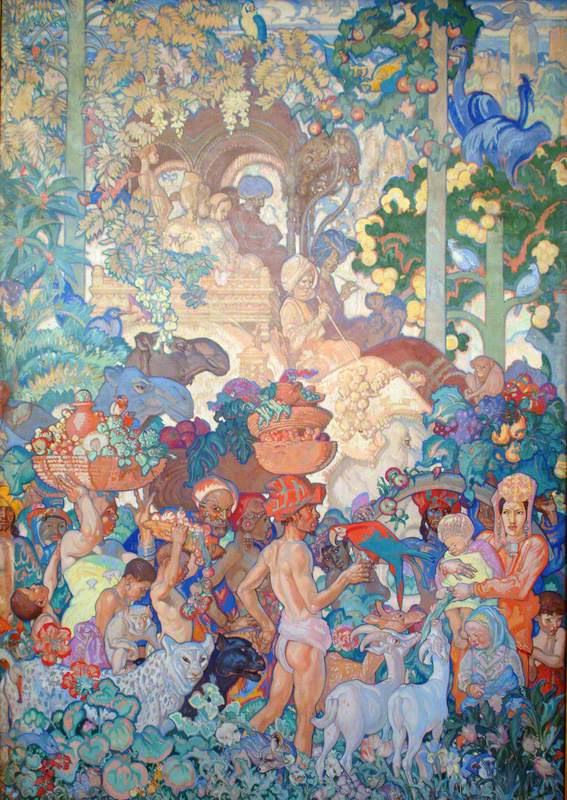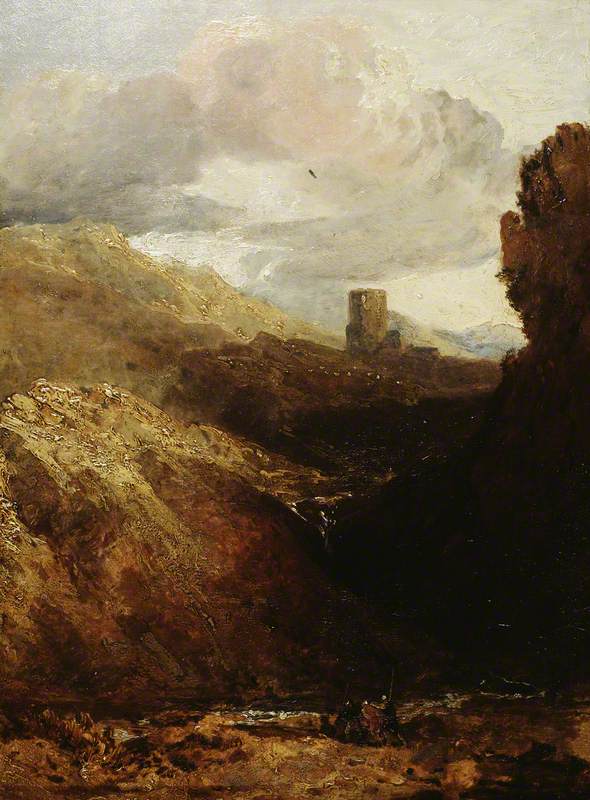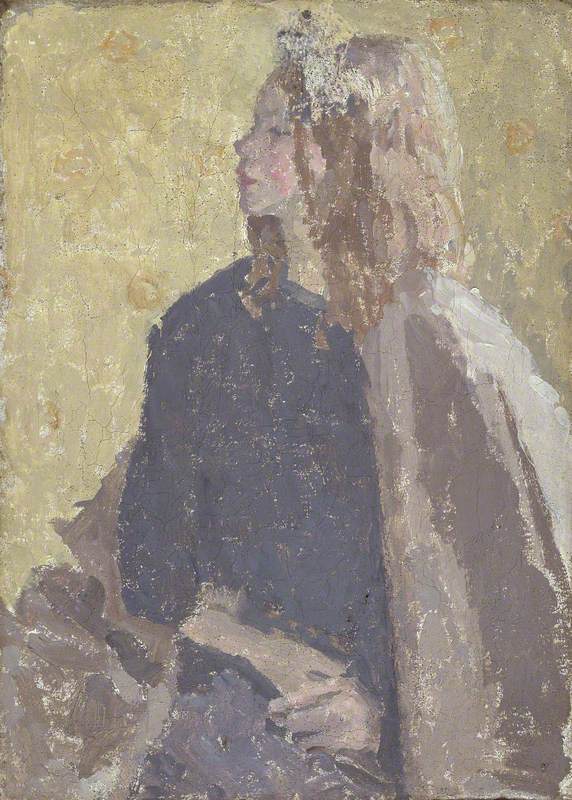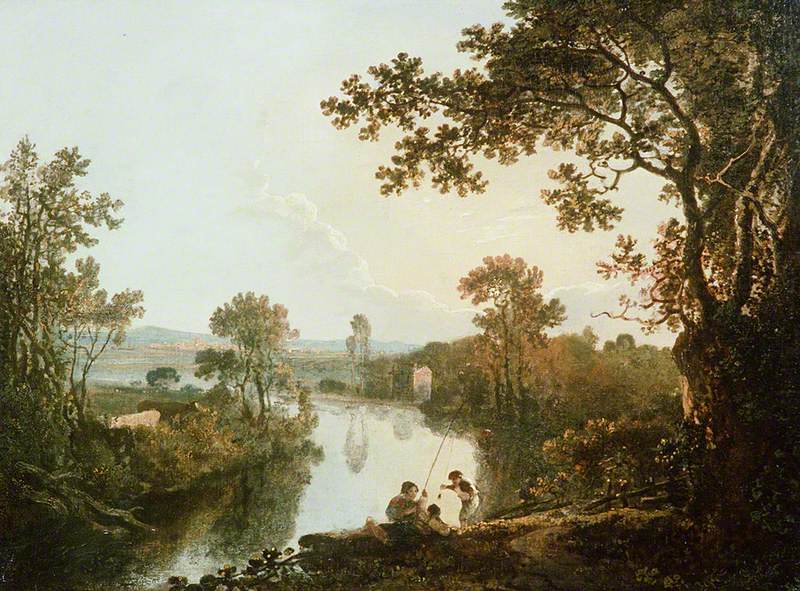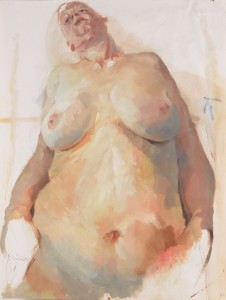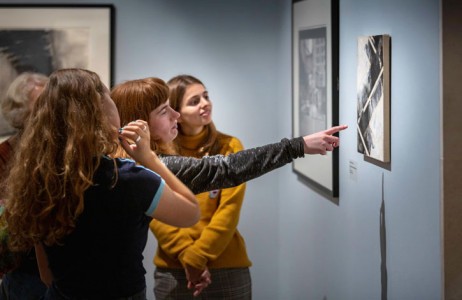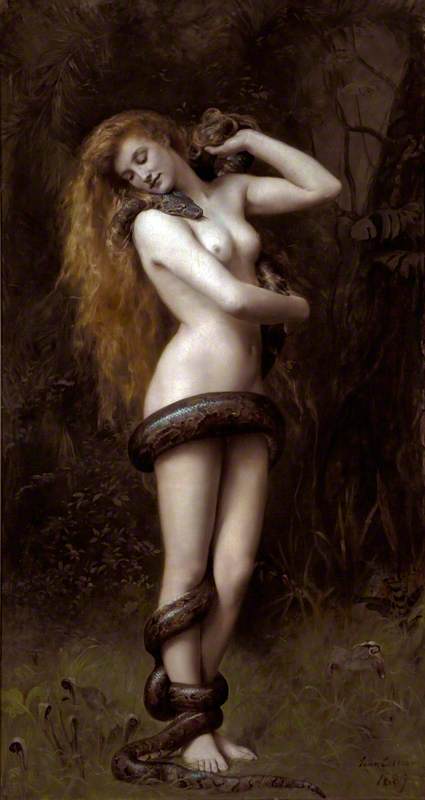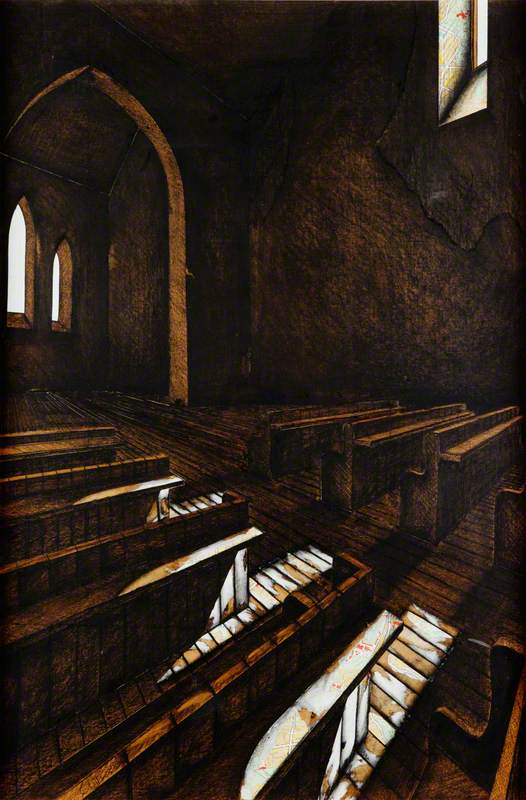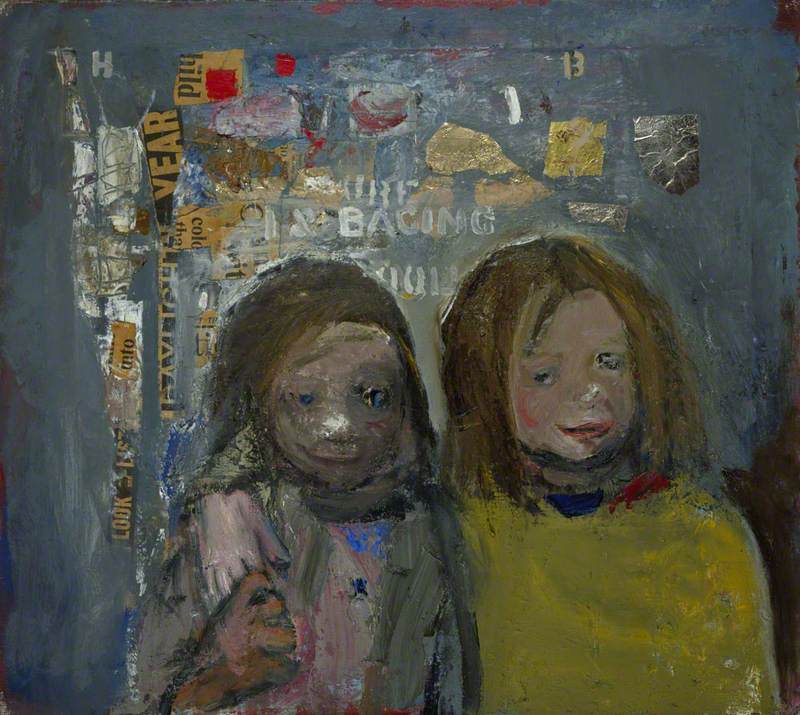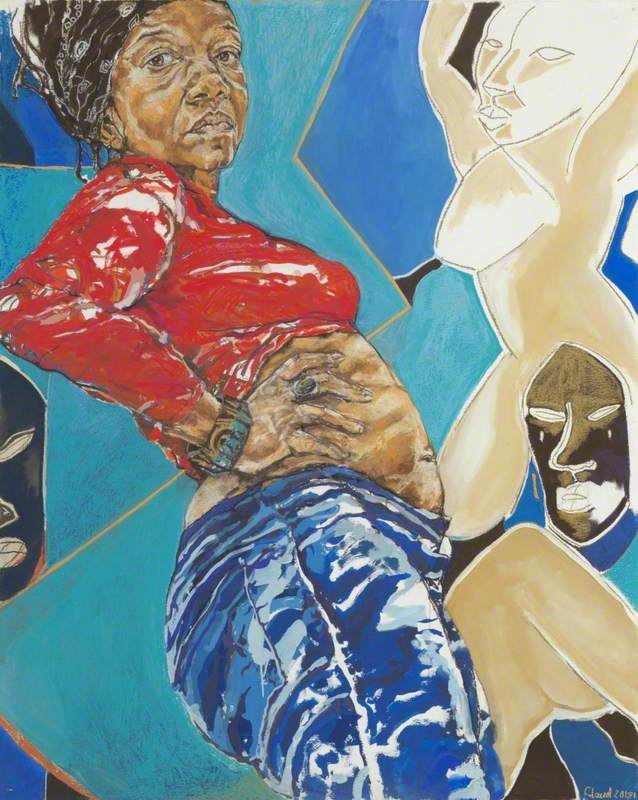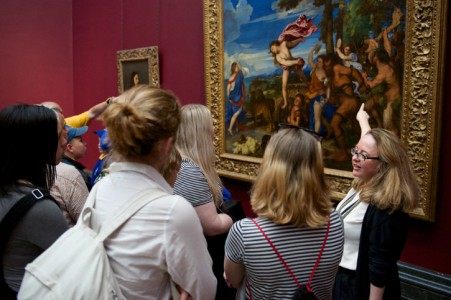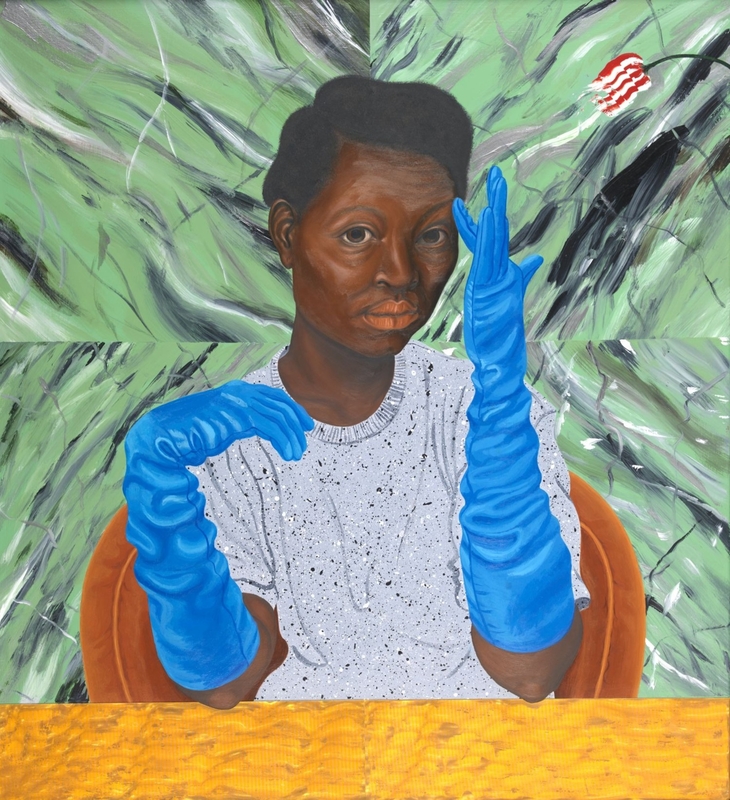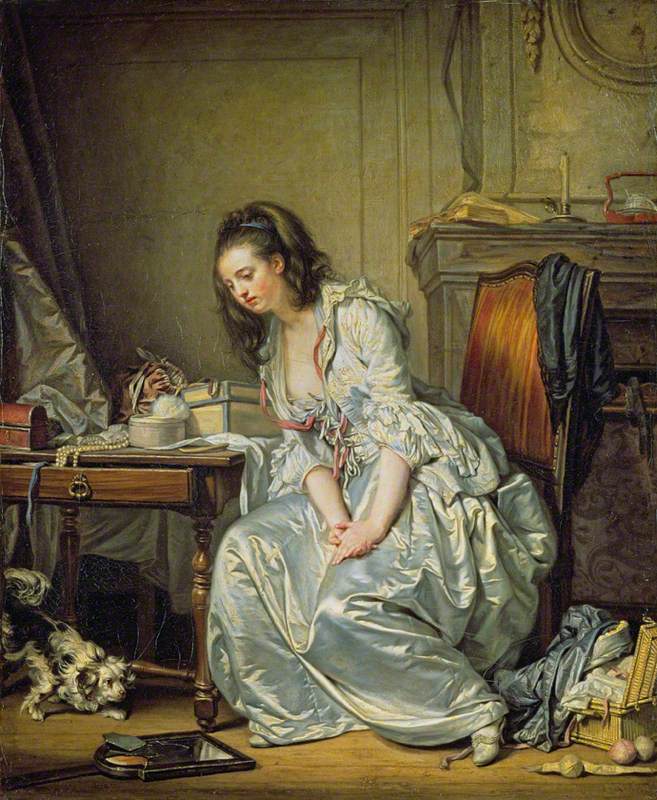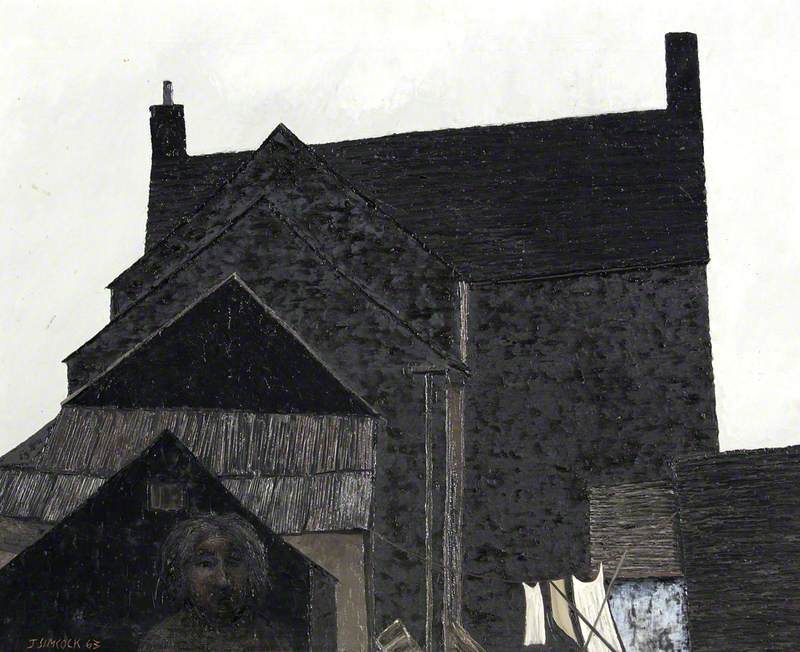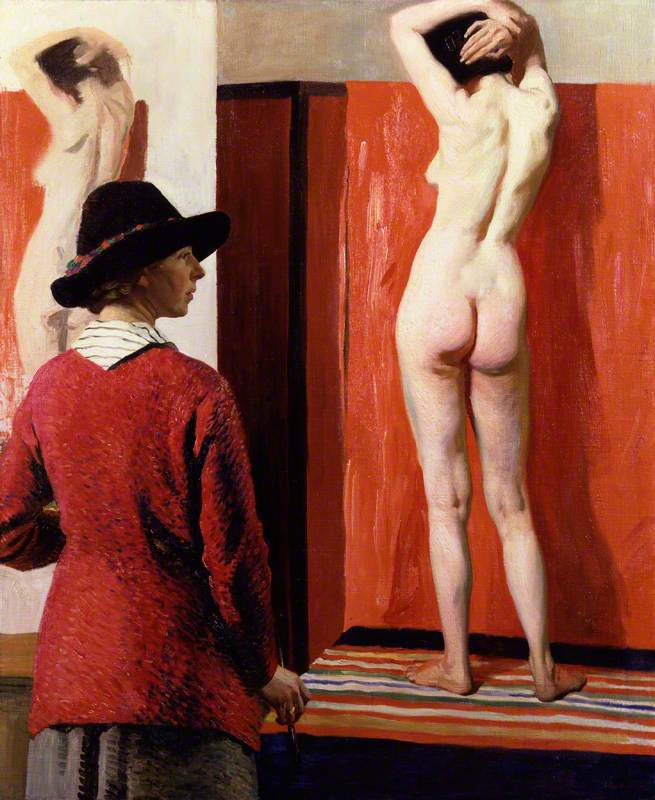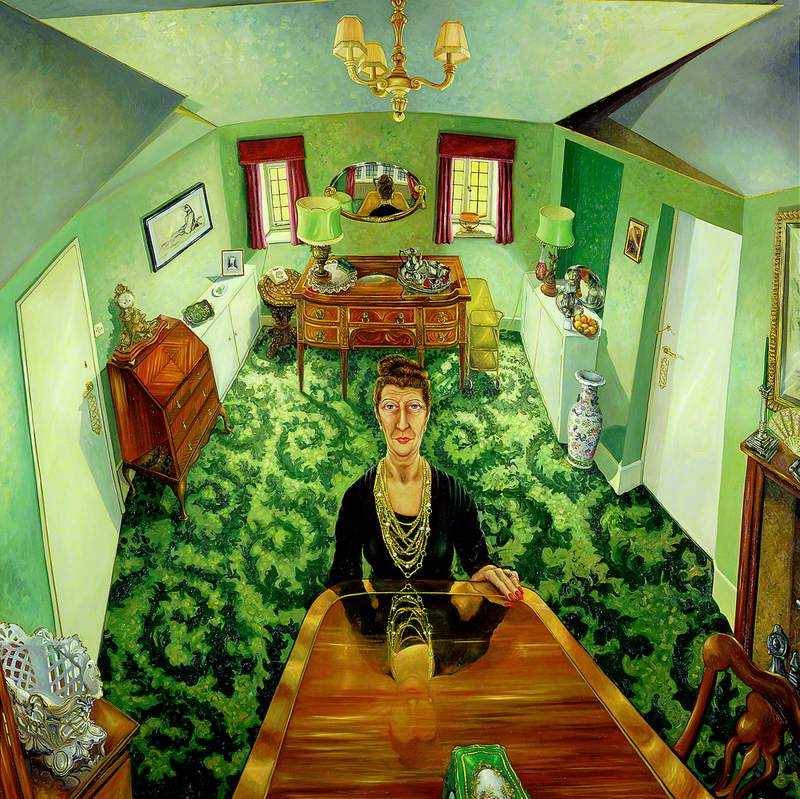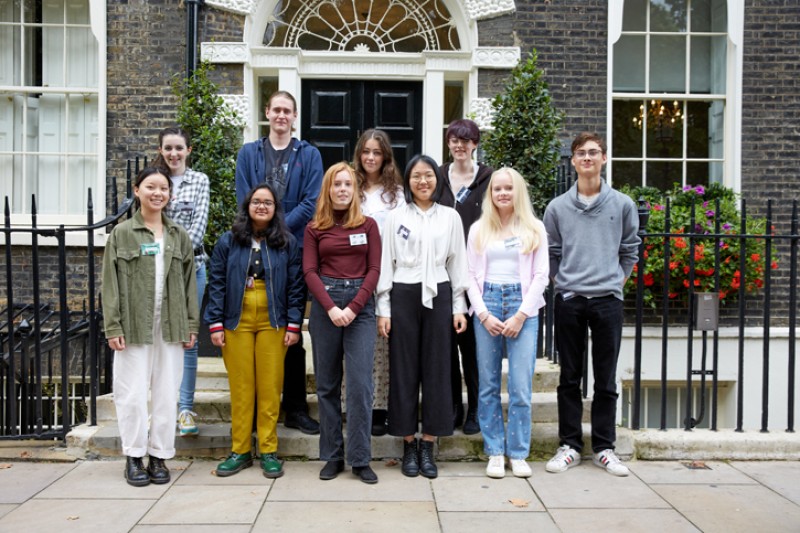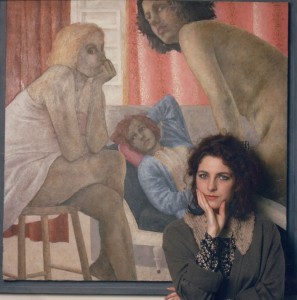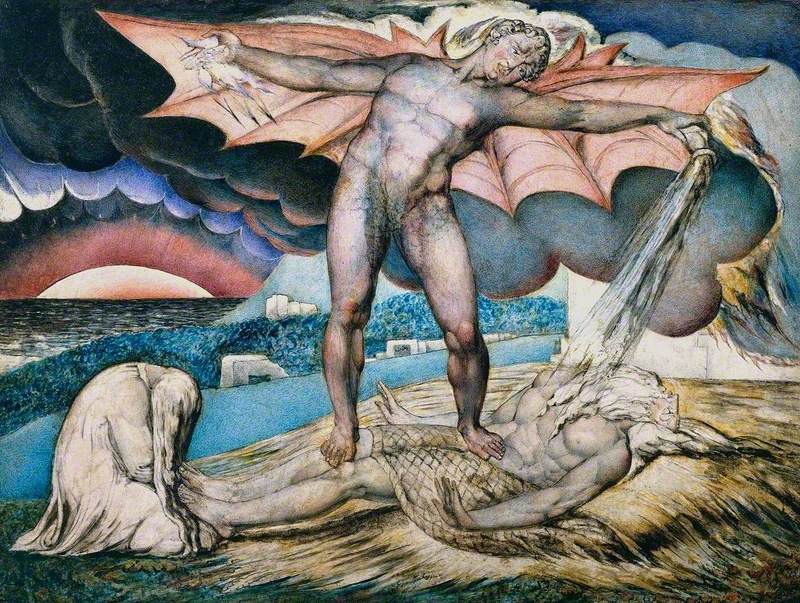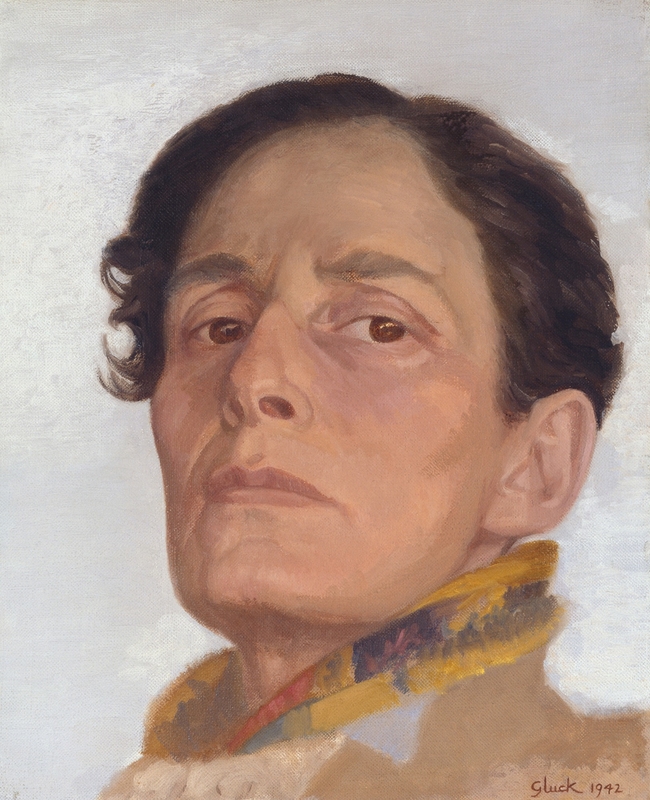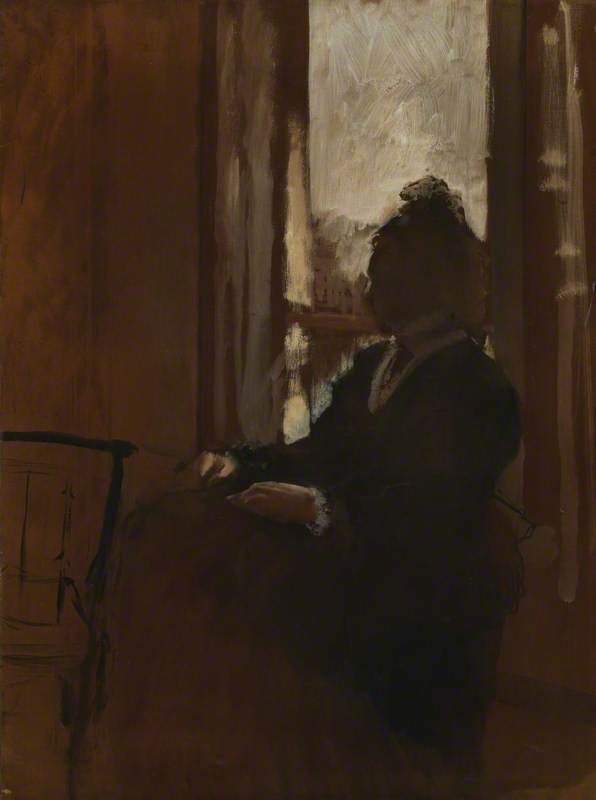This essay was written for the 2019 Write on Art prize, winning second place in the Year 12 & 13 category.
During my work experience at the National Library of Wales, I was able to explore their archives and was introduced to various artworks linking to Wales and our culture. However, one, in particular, created a lasting impression.
Greenham, Peace Vigil by Welsh artist Claudia Williams depicts the Greenham Common Women's Peace Camp which she attended between 1983 and 1984. Williams usually illustrated scenes of domesticity and childhood, so this painting is striking due to the controversial scene it portrays. However, it remains true to the core themes that Williams explores in her artwork due to the peaceful and maternal elements at its heart rather than the hostility of the events at Greenham.
I was first intrigued by its sheer size – at 184 x 123 cm, the piece is enormous and immersive. Although there is no focal point, the painting's brimming composition compensates for its absence. The frame is busy with women sitting, dancing, sleeping and singing, expressing a lively atmosphere. Such features reflect the storytelling nature of the painting.
Another aspect of the artwork that struck me as very interesting was its pentagonal shape, echoing the altarpiece forms used in the European tradition. Paired with the mother and child in the centre of the painting, monumentalised as a Madonna figure, these serve as visual representations of Williams' Catholic faith and emphasise the focus on peace and harmony that exists throughout her work.
Red is dominant in the image; under close observation, a red under-painting can be noticed across the entire painting. This powerful hue reflects warmth and is contrasted by the cold-toned blue sky at the top of the composition. As a colour, red reflects drama, passion and intensity; in this painting, it could represent the anger that the women felt that influenced them to protest. According to the notes in Williams' sketchbook that accompanied her to Greenham Common, red to reflects 'martyrdom', 'energy' and 'fortitude' – undoubtedly the colour carries great meaning.
Williams uses both thin layers of paint and a thick, impasto technique across the piece to create a variety of textures. She reveals her expressive style by alternating between sweeping and staccato brushstrokes. Near the fire the piece is evocative of Van Gogh's style, the swirling lines and definitive mark making in this section are effective in making the fire seem alive.
Williams' figures are my favourite part of the image; although not painted realistically, a human actuality is achieved through gesture, posture and expression. The simplistic style used for the painting makes the figures doll-like and amiable; they are reminiscent of Gaugin's – this style of painting expresses intimacy and familiarity. The artist has captured the movement of the women, effective in making the viewer feel as though they had walked into the scene. These aspects of the painting give it verisimilitude and a lifelike sense, achieved by the feeling they elicit.
Greenham, Peace Vigil, hung in the archives of the National Library, is not on display to the public. This is a pity, considering that it details an important element of Welsh and British history produced from a first-hand experience of the event. Claudia Williams is one of a very few well-known female Welsh artists – it is vital that her work is exhibited publicly to represent the perspective of women. As stated by literary critic Bedwyr Lewis Jones in 1968, 'Painting, even more so than poetry, has been an exclusively masculine art'. Williams' painting, elementally feminine and maternal, opposes this narrative and stresses the importance of harmony and fellowship in today's climate.
Grace Page
Further reading
H. Heuser and R. Meyrick, Claudia Williams: An Intimate Acquaintance, Sansom & Co., 2000
